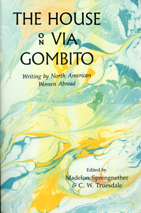Those years we visited Isla Mujeres every February, we coveted Mexican masks like bits of the sun and moon–a tiny scrap worth more than gold to take home. My husband always bought Mexican beer the day before we caught the ferry, then as the plane lifted over turquoise water, he’d drink a beery salute to our beloved island, his last taste of happiness expiring as blue-green turned to grey, then white.
Not a beer drinker myself, I thought if I captured a face from Isla, I might pretend I was a conquistadore or a mermaid with flowing locks and huge finny tail. During an afternoon stroll from our hotel to the town plaza, rebuilt after the hurricane, we window-shopped down Benito Juarez Avenue (Am I making this up?) and paused at the corner near the plaza. There in the only store resembling a dime store, masks of rather inferior quality gathered dust behind the glass.
The true mask shop perched on a tiny hill at the ocean side of the plaza. Though damaged by the hurricano, it hadn’t been as destroyed as the parrot restaurant or an adjacent disco–both of whom now exposed carcasses of cables and crumbling walls to the crash of waves and cries of gulls. The shop was run by a woman with a more European than Mayan look, though she was clearly Mexican, given her accent. We’d learned to identify visitors with more Spanish in them–their hair curled and grayed, their faces with wider lips, paler skin. They often wore westernized clothes–odd usage, that “westernized,” since we were further west than Spain itself, and the clothes probably came from the U.S.
Like a museum, her shop demanded careful study and contemplation. The conquistadores had long grey or short black beards–something the native people never possessed–and their eyes–beyond the round openings cut in their faces–were blue. Perhaps they had conquored simply because of their oddity, though we certainly knew about the scourges of disease which actually went both ways, European smallpox for New World syphilis. The mermaids with their finny tales also had blue eyes–like the Spaniards come from the deep. We studied the “jagulars” (as we called them with a touch of Christopher Robin) who sprouted real whiskers from their black-dotted, orange faces and tufted ears. And the panthers so black and menacing that we quaked under the staring golden glass eyes.
The double faces intrigued us most: half Spaniard/half jagular, or half moon/half sun. There was something fitting about these clearly announced hybrids, like Isla itself perched between jungle and ocean, Spaniard and Mayan, rocked constantly in the division of these faces.
Eventually we made our first purchase of a mask: of thin though sturdy metal, more round than long, it sported a fiery sun with wicked lips who was kissing in the center a pale damsel moon–the sun the conqueror, the moon the pliant beloved. We didn’t buy it at the mask shop, but asked that a clearly Mayan young woman lift it from among its dusty cousins in the five and dime. Cheaper and perhaps more durable than the wooden and far more ancient masks hung above the waves. Eventually, we would also purchase a mask from the lady of the shop, but this was later, when we had more gringo cash, and when having something authentic (whatever that meant) was more important than bringing home a charming replica of our days and nights, sun, sand, clacking palms and sweet, kissable moon.


Leave a Reply